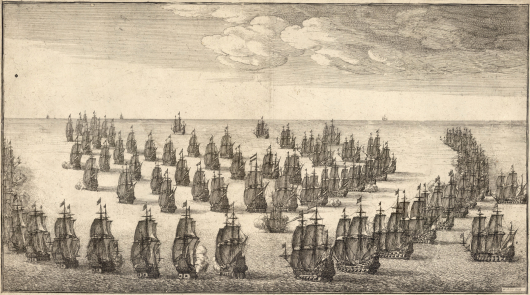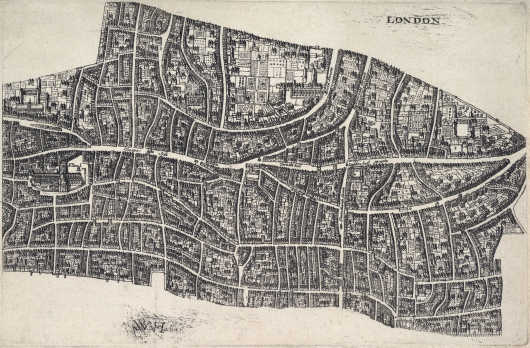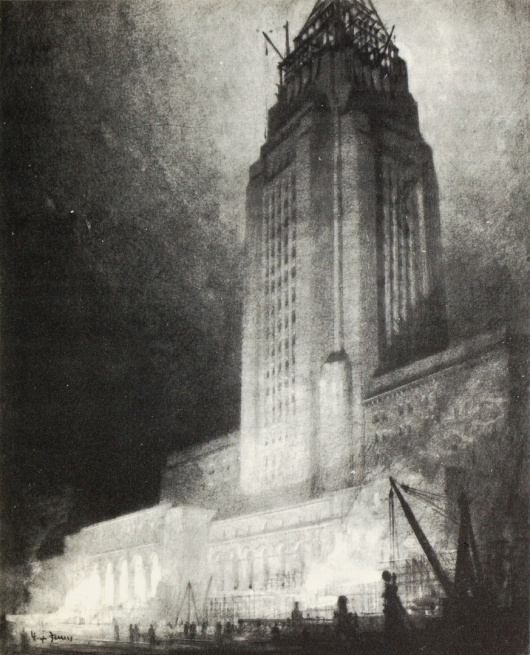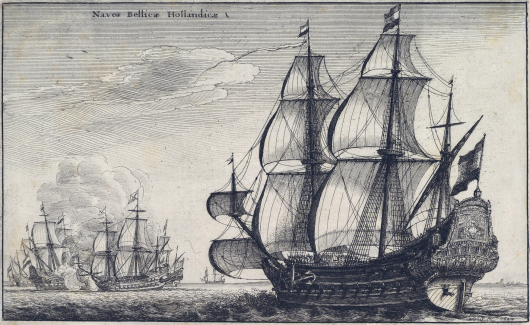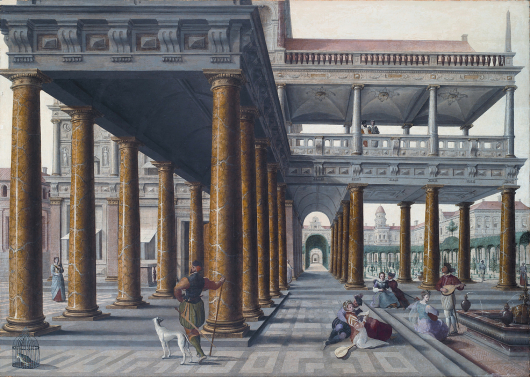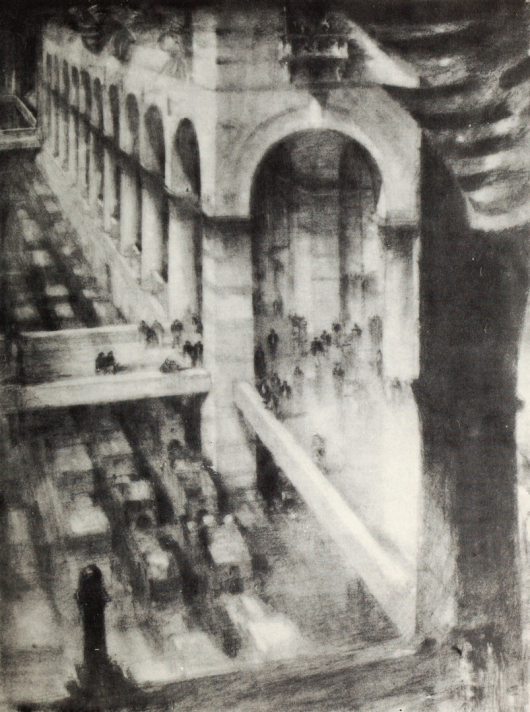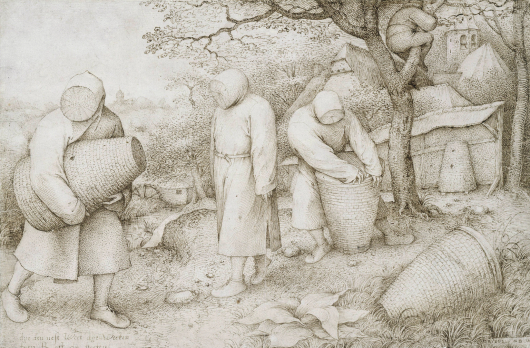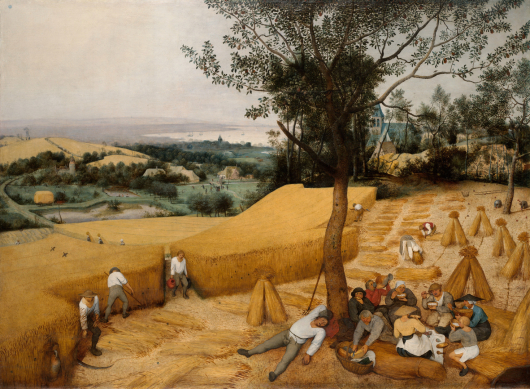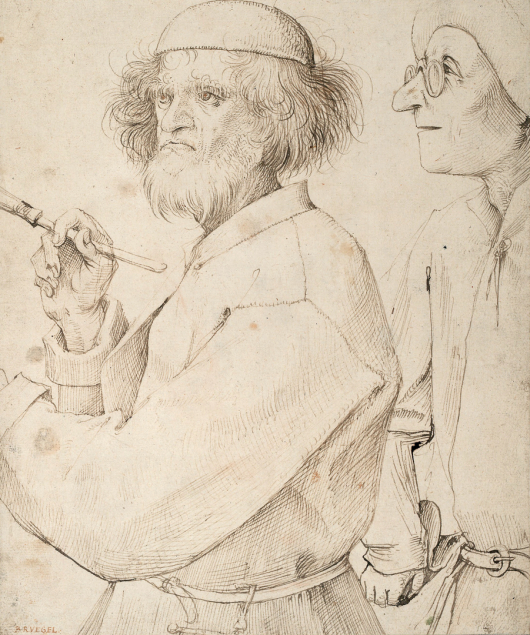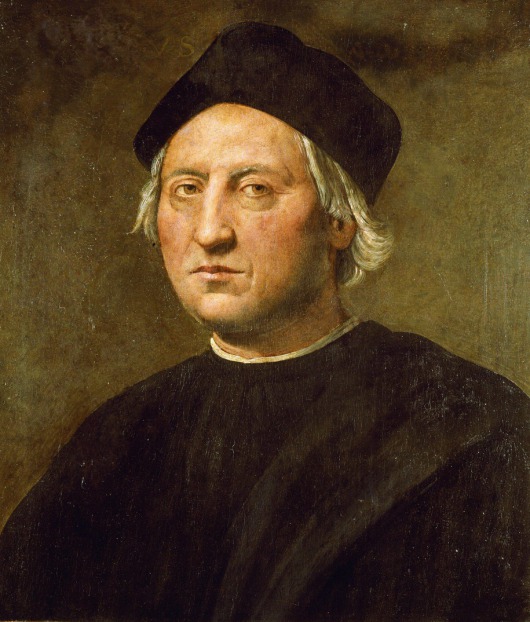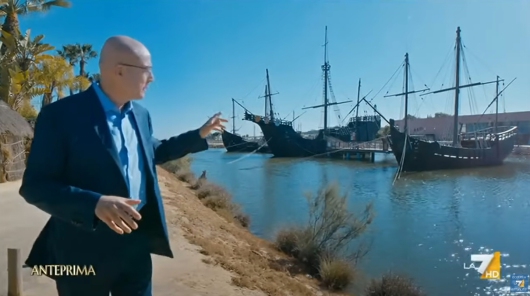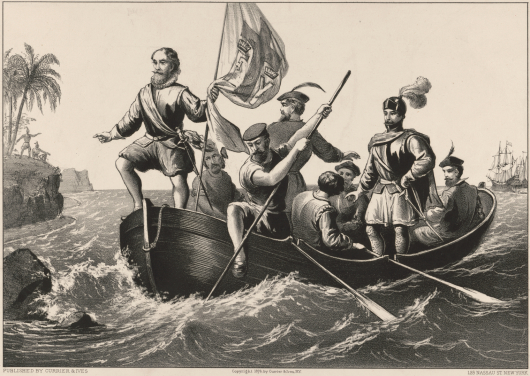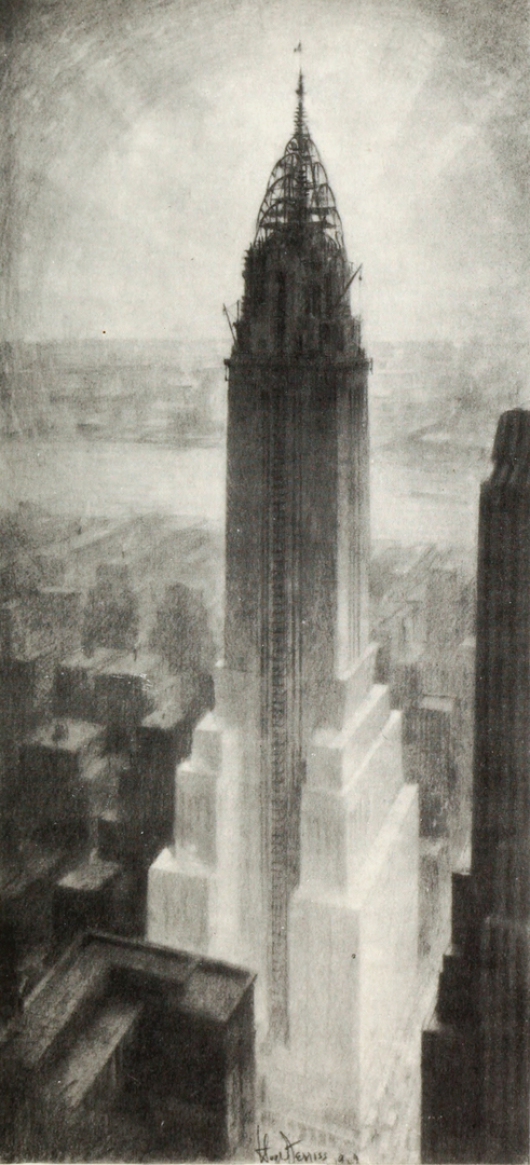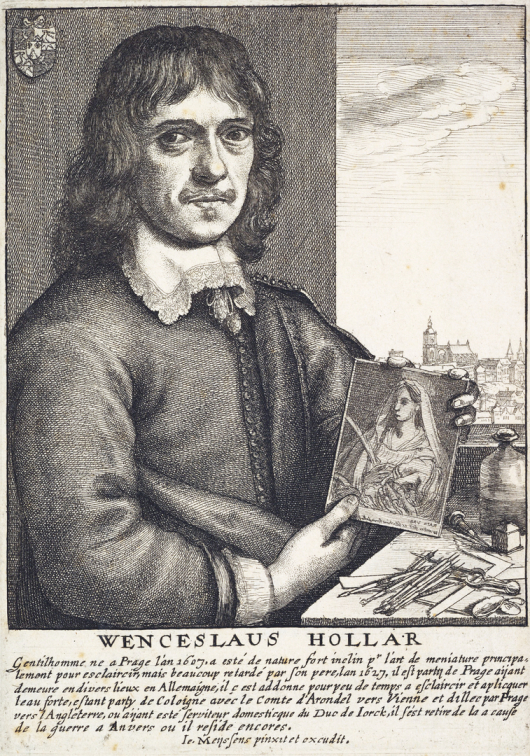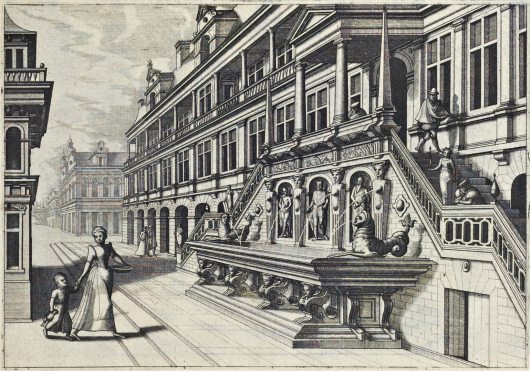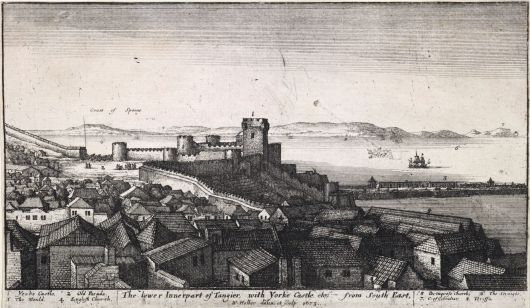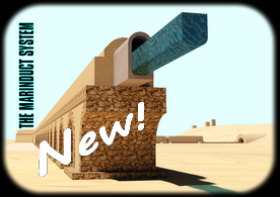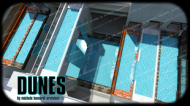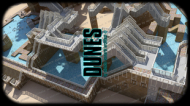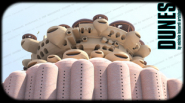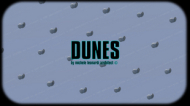The Invisible
Cities
I
Hans Vredeman de Vries: Work from "Variae architecturae formae", 1636. Source: Getty Research Institute, Los Angeles, CA, U.S.A.
Realism and abstraction in:
Pieter Bruegel the Elder (c. 1525-30-1569)
Hans Vredeman de Vries (c. 1527-c. 1607),
Wenceslaus Hollar (1607-1677),
Hugh Ferriss (1889-1962).
Wenceslaus Hollar: "A naval battle".
Source: Digital Collection, University of Toronto, Canada.
Pieter Bruegel the Elder: "Dulle Griet" (Mad Meg), 1561.
Source: Museum Mayer van den Bergh, Antwerp, Belgium.
LE CITTA' INVISIBILI
“E (Marco) Polo (al Gran Kan): - L’inferno dei viventi non è qualcosa che sarà; se ce n’è uno, è quello che è già qui, l’inferno che abitiamo tutti i giorni, che formiamo stando insieme. Due modi ci sono per non soffrirne. Il primo riesce facile a molti: accettare l’inferno e diventarne parte fino al punto di non vederlo più. Il secondo è rischioso ed esige attenzione e apprendimento continui: cercare e saper riconoscere chi e cosa, in mezzo all’inferno, non è inferno, e farlo durare, e dargli spazio.”
Citazione da “Le città invisibili” di Italo Calvino, Cap. VIII, Epilogo, Einaudi, Torino, 1972.
"And (Marco) Polo said (to Kublai Khan): The inferno of the living is not something that will be; if there is one, it is what is already here, the inferno where we live every day that we form by being together. There are two ways to escape suffering it. The first is easy for many: accept the inferno and become such a part of it that you can no longer see it. The second is risky and demands constant vigilance and apprehension: seek and learn to recognize who and what, in the midst of the inferno, are not inferno, then make them endure, give them space.”
Quote from "Invisible Cities" of Italo Calvino, Chapter 9, Epilogue, translated from Italian by William Weaver, Harvest Books, San Diego, New York and London, First Harvest edition 1978.
Wenceslaus Hollar: "Fireworks at Hemissem", 1650.
Source: THE MET, The Metropolitan Museum of Art, New York City.
Wenceslaus Hollar: "London".
Source: The Thomas Fisher Rare Book Library of
University of Toronto - The W. Hollar Collection.
Wenceslaus Hollar: "London before the Great Fire", 1666-77.
Source: THE MET, The Metropolitan Museum of Art, New York City.
Pieter Bruegel the Elder: "Massacre of the Innocents", c. 1565-67.
Source: The Royal Collection Trust, Queen's Gallery,
Buckingham Palace, London, U.K.
Hugh Ferriss: from "The Metropolis of Tomorrow:
Cities of Today, Los Angeles, The City Hall",
Dover Publications, Inc., Mineola, New York, 1929-Reprint 2005.
Source: Art Reference Library, Whitney Museum, New York City.
An illustration taken from "Gulliver ressuscité ou Les voyages, campagnes et aventures extraordinaires du Baron de Munikhouson"
by Rudolf Erich Raspe, London and Paris, 1786.
Source: gallica.bnf.fr - Bibliothèque nationale de France.
Wenceslaus Hollar: "Dutch Ships", title page, 1647.
Source: THE MET, The Metropolitan Museum of Art, New York City.
Hans Vredeman de Vries: from "Variae architecturae formae", 1636. Source: Getty Research Institute, Los Angeles.
Wenceslaus Hollar: "Naves Bellicae Hollandicae"
(Dutch Warships), 1647.
Source: THE MET, The Metropolitan Museum of Art, New York City.
Work on perspective of Hans Vredeman de Vries.
Source: Deutsche Fotothek in Dresden, Germany Saxon State Library.
Hugh Ferriss: from "The Metropolis of Tomorrow:
Projected Trends, Evolution of the step-back building, First stage";
Dover Publications, Inc., Mineola, New York, 1929.-Reprint 2005.
Source: Art Reference Library, Whitney Museum, New York City.
Work into the perspective of Hans Vredeman de Vries.
Source: Deutsche Fotothek in Dresden, Germany Saxon State Library.
Wenceslaus Hollar: "Bearded old man with a tilted head", 1645.
(But is evident that it is the master Hans Vredeman de Vries,
when he was younger than in the portrait at the bottom of this page.)
Source: THE MET, The Metropolitan Museum of Art, New York City.
Hans Vredeman de Vries: "Architectural Caprice with Figures", 1568.
Source: Google Art Project, Bilbao Fine Arts Museum, Spain.
Wenceslaus Hollar: "Nine sheep", 1646.
Source: THE MET, The Metropolitan Museum of Art, New York City.
Pieter Bruegel the Elder: "Twaalf spreuken op borden".
Source: Museum Mayer van den Bergh, Antwerp, Belgium.
“Black Sheeps”, by Michele Leonardi © December 2022.
From the series: "Hyper-divisionism, or atomism by Democritus",
and from the series: (unlike the humans) "God never plays dice".
Sandro Botticelli (1445-1510): "La carta dell'Inferno" (Chart of Hell),
between 1480 and 1490, Biblioteca Apostolica Vaticana
(Vatican Library), Vatican City, Rome. Source: Wikipedia.
Pieter Bruegel the Elder: "Faith" (Fides), "The Virtues", c. 1559-60.
Source: THE MET, The Metropolitan Museum of Art, New York.
Hugh Ferriss: from "The Metropolis of Tomorrow:
Projected Trends, Pedestrians over wheel-traffic";
Dover Publications, Inc., Mineola, New York, 1929-Reprint 2005.
Source: Art Reference Library, Whitney Museum, New York City.
Wenceslaus Hollar: "zü Cölln" (Cologne), 1643.
Source: THE MET, The Metropolitan Museum of Art, New York City.
Pieter Bruegel the Elder: "The Beekeepers and the Birdnester", c. 1568.
Source: Kupferstichkabinett, Staatliche Museen zu Berlin, Germany.
Pieter Bruegel the Elder: "The Harvesters", 1565.
Source: THE MET (after MOMA), The Metropolitan Museum of Art,
Manhattan, New York City, NY, U.S.A.
Wenceslaus Hollar: "St. George's Chapel Choir, Windsor".
Source: THE MET, The Metropolitan Museum of Art, New York City.
Pieter Bruegel the Elder: "The Painter and the Buyer", ca. 1566,
Grafische Sammlung Albertina Vienna, Austria.
Source: Google Art Project.
"Cristoforo Colombo" (1451-1506), The Portrait of
Christopher Columbus by Ridolfo del Ghirlandaio (1483-1561).
Source: Museo Navale di Pegli (Genoa Naval Museum) Genoa, Italy.
Pieter Bruegel the Elder: "Three Caravels in a Rising Squall
with Arion on a Dolphin", from "The Sailing Vessels", 1561-65.
Source: THE MET, The Metropolitan Museum of Art, New York City.
La7 - Una giornata particolare:
"Cristoforo Colombo: la scoperta dell'America",
conduce Aldo Cazzullo:
"Columbus taking possession of the new country",
Published by the Prang Educational & Co., 1893, Boston, MA, U.S.A.
Source: Repository Library of Congress Prints and
Photographs Division, Washington, D.C. 20540 U.S.A.
The routes of the four Voyages of Christopher Columbus.
Maritime expeditions, during 1492 to 1504, to the Caribbean Islands and coast of Central America in North America. Source: Wikipedia, "Voyages of Christopher Columbus", Wikimedia Commons "Viajes de colon bg.svg", Author Phirosiberia, 2009.
"The landing of Columbus at San Salvador, October 12, 1492", Published by Currier & Ives, c. 1876, NewYork, NY, U.S.A.
Source: Repository Library of Congress Prints and
Photographs Division, Washington, D.C. 20540 U.S.A.
Hugh Ferriss: from "The Metropolis of Tomorrow:
Cities of Today, New York, Forty Second Street, The Chrysler Building";
Dover Publications, Inc., Mineola, New York, 1929-Reprint 2005.
Source: Art Reference Library, Whitney Museum, New York City.
Pieter Bruegel the Elder: "Children's Games", 1560.
Source: Kunsthistorisches Museum, Vienna, Google Art Project.
Wenceslaus Hollar: "Cantherbury" (The Canterbury Cathedral).
Source: The Thomas Fisher Rare Book Library of
University of Toronto - The W. Hollar Collection.
Wenceslaus Hollar: Self Portrait, 1649.
Source: THE MET, The Metropolitan Museum of Art, New York City.
Hans Vredeman de Vries: Work from "Artis perspectiuae
plurium generum elegantissimae formulae", 1568.
Source: Getty Research Institute, The Reseach Library, L.A., CA, USA.
Hans Vredeman de Vries: "Ideale Palastarchitektur".
Source: Wikimedia Commons, Van Ham Kunstauktionen.
Wenceslaus Hollar: "The lower inner part of Tangier", 1673.
Source: THE MET, The Metropolitan Museum of Art, New York City.
Hans Vredeman de Vries: from "Variae architecturae formae", 1636. Source: Getty Research Institute, Los Angeles.
Anonymous: Portrait of Hans Vredeman de Vries.
Source: gallica.bnf.fr - Bibliothèque nationale de France.




